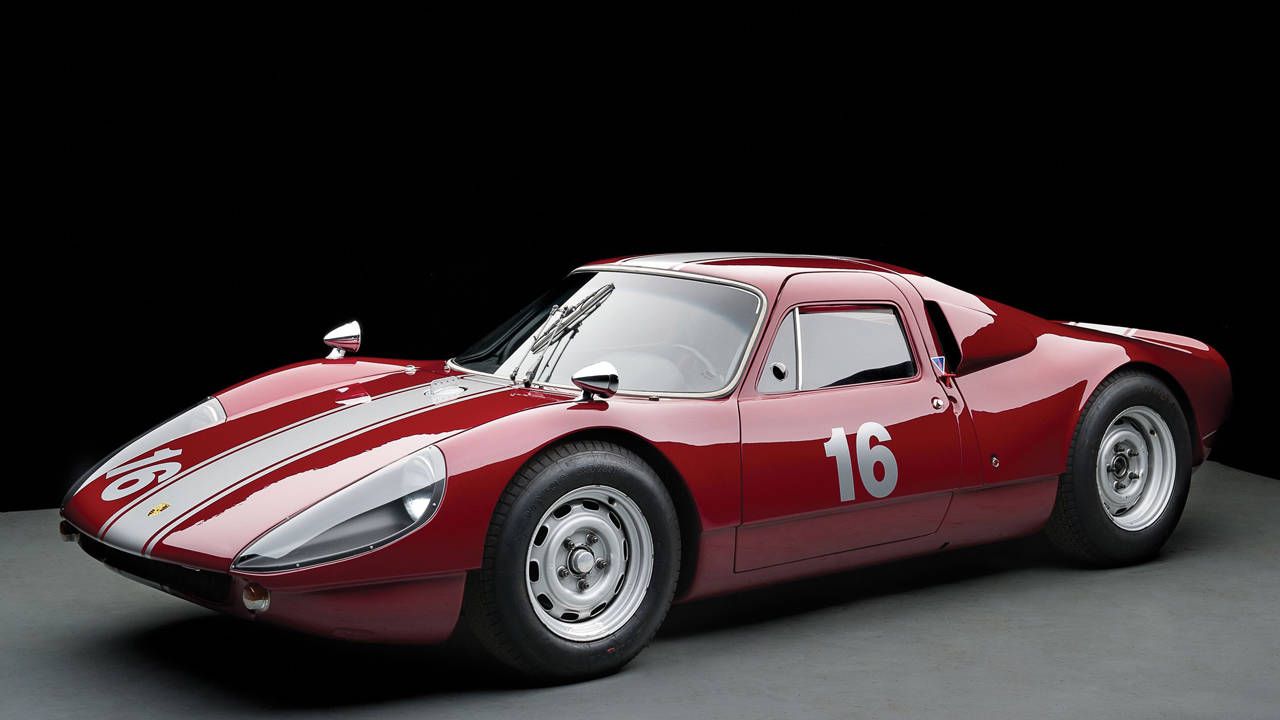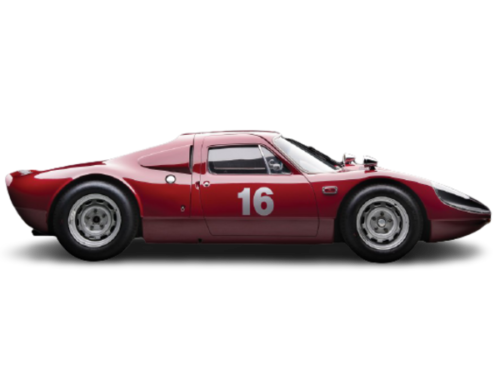Porsche 904/6 Carrera GTS (1965)
We already know that the 904 was a racing car built to satisfy the FIA’s definition of a GT car. What most people don’t know is that in 1965, the 904’s second and final production year, some examples received a version of the 911’s 2.0-liter flat-six. This version was dubbed the 904/6 and was focused on the factory works effort by Porsche. Six of these cars were so equipped and used a chassis number of 906-0xx.
Porsche built a total of six similar 904/6 Works team cars with the following chassis number assignments: 906-001, 002, 005, 006, 011, and 012. All survive in varying states but for chassis 906-005, which was destroyed during testing and development in 1965 (which is why you often see production numbers listed at five cars).
The 200 bhp, 1,991 cc SOHC six-cylinder engine had dual Weber carburetors, five-speed manual transmission, front and rear independent suspension, and front and rear disc brakes. They were built solely for endurance racing (although, famously, they were the last Porsche race cars that could be driven on the street).
The high strung 1.9-liter aircooled flat-six was a cracking engine, developed by Porsche engineer Hans Tomala. Tomala had originally specified for the 904, but not even the production 911’s engine was ready in time, so a modified version for racing had to wait a few years. Once equipped with the new two-litre six, which gave a considerable increase in power, the Carrera GTS could step up to a new level of performance altogether.
The six-cylinder cars were easily differentiated from the four-cylinder variants by the central fuel filler caps and vertical lift windows, whilst differences in brake ducts, fog lights, and side air scoops varied from car to car, as development was a continual and rapid process.
This six was sufficient enough for a 904/6 that was co-driven by Gunther Linge and Umberto Maglioli to take 3rd place overall in the 1965 Targa Florio. Porsche 906-012 was entered twice by the factory team for the 1965 international racing season, both in the Prototype (up to two litres) class. Firstly, at the Nürburgring 1000 km race, on 23 May, where co-drivers Peter Nöcker and Günter Klass, with race number 22, finished a superb 6th overall and 3rd in class, which was quite an achievement for a brand-new car in its first race.
Klass took to the wheel of 906-012 again, along with a new co-driver, Dieter Glemser, when they competed at the 1965 24 Hours of Le Mans on 19 and 20 June. Wearing number 35, they drove through the night only to retire at 7:00 a.m. on Sunday, due to valve trouble. (A copy of the Le Mans entry paperwork is provided in the history file, and it makes for interesting reading.) Between 19 and 25 July 1965, Eugen Böhringer and Rolf Wütherich shared the wheel of 906-012 at the Coup des Alpes, wearing race number 7, but they failed to finish.












